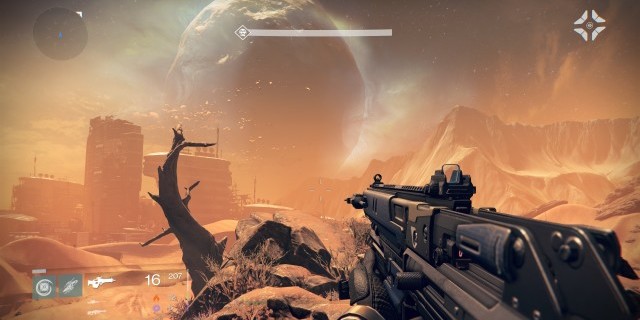
After stepping away from Halo’s immense shadow, Bungie is back with a brand new franchise that isn’t too dissimilar from the series that made it the studio you know today. Destiny, an online-only first-person shooter (with some light RPG/MMO elements), is attempting to take the lessons learned from Halo and bring them to a genre hybrid that, at first glance, seems epic in scale. What you get out of Destiny will be different depending on what you are looking for, but whatever it is will undoubtedly be bundled with the feeling of lost potential.
Right out of the gate, Destiny sets you up for a seemingly large-scale story focused on a group of warriors known as Guardians, an immense, planet-sized orb called the Traveler and the many alien species set out to destroy it. I would tell you more about Destiny’s lore, but the majority of the game’s narrative is front-loaded. Once you’re past the (admittedly cool) opening cinematics, you’re thrown into this world with many questions and a game that does little to answer them.
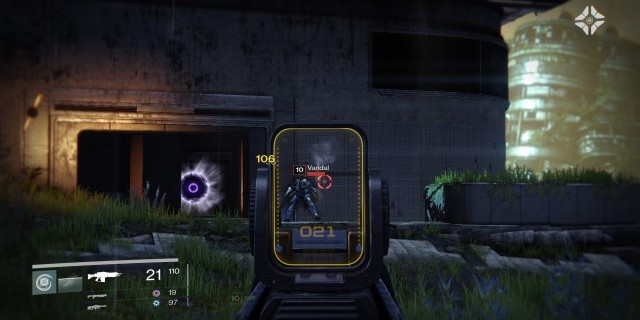
But don’t worry, weary Guardians, you’ll find plenty of background on Destiny’s fiction as you unlock Grimoire Cards, which give you access to more of the lore beyond the paltry amount provided to you throughout the story. Think of them like the codex entries from the Mass Effect series. Unfortunately, you can’t view these seemingly important pieces of fiction in-game; you need to access them through Bungie.net. Whatever important bits of information the game provided are interesting, but having to go to an external source to view them defeats the purpose entirely.
At first I felt I was missing out on something pretty complex as my little robot companion, known as a Ghost, rattled off dialogue about the many facets of this seemingly intriguing universe, but much of it went right over my head. It’s not overly complicated; I’m simply never given a reason to care. In a way, that describes much of my experience playing Destiny.
It’s clear the folks at Bungie put a lot of effort into crafting this universe. The game is absolutely gorgeous, and each new planet is visually different from the last. The art, along with the fantastic score, seems to paint a picture of a universe full of potential. Unfortunately, exploring these worlds is a completely hollow experience. You’re never given much of a reason to explore outside of a handful of well-hidden loot crates. There are plenty of enemies to kill, but beyond that, you’ll quickly find yourself just focusing entirely on your mission and nothing more.
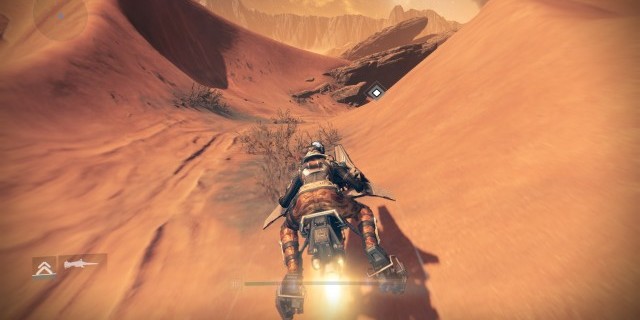
As an always-online game, you’ll often run into other players when traveling around each planet. This is one of Destiny’s biggest hooks: visiting a planet and running into random players along the way. You can interact with them or join their group if you want, but otherwise, they are simply off doing their own thing. This seems initially cool, sure, yet it doesn’t change the fact that these planets are absolutely lifeless, which only became more apparent the more I played.
Randomly spawned enemies and a handful of players don’t make for interesting environments. The skyboxes may be pretty, but like much of my Destiny experience, they only offer a view of a more compelling experience seemingly out of reach at all times. At some point it becomes less of a fully-realized world and more of an art museum in which you occasionally interact with other humans.
Once you actually enter into the game’s many identical-looking “dungeons,” you’re cut off from the rest of the world, free to continue whatever mission you are on by yourself or with your group of friends. In true Bungie fashion, the gunplay is fantastic, and the enemy AI responds in exciting ways with each encounter. These situations aren’t as memorable as your typical encounters in Halo simply because of how frequent they are, yet they offer a something that feels unique compared to other shooters.
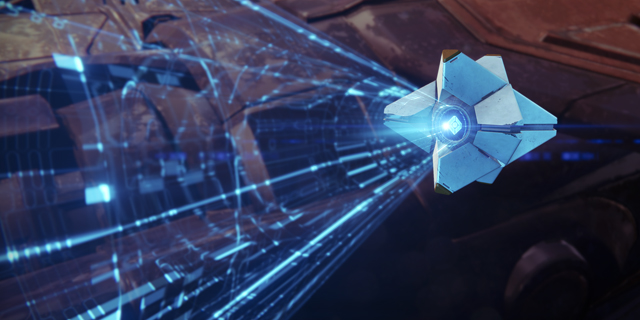
That being said, the lack of variety in the mission design is perhaps one of its biggest problems. The missions themselves boil down to shooting aliens, shooting aliens while you wait for your Ghost to scan something and shooting an even bigger alien surrounded by large groups of smaller aliens. Occasionally you don’t have to shoot aliens while your robot buddy scans, giving you a chance to listen to his inane banter and stare at some walls. Or dance. Destiny excels at allowing your character to dance.
This is less of a chore when you’re together with friends, as most games of this nature are, but the experience is only better with friends simply because of the company of your friends, not because the game changes in any dramatic way. Unlike many MMOs, a genre Destiny heavily borrows from, you won’t find many reasons to play the story cooperatively unless you need someone to keep you awake (or perhaps sane) during the monotony. It strives to focus so heavily on multiplayer, yet does so little to make you understand why it even matters to begin with.
This changes during the Strike missions, which require a team of three players and are easily the most exciting segments in the game. Each mission has you essentially raiding an enemy stronghold, mowing down waves of aliens and taking on a big bad at the end of it all. These actually require real teamwork and are a legitimate challenge, even with a properly leveled team, pushing Destiny’s best aspects, the gunplay and the enemy AI, into the forefront. It doesn’t solve the core problems, but it demonstrates not all of the potential is wasted.
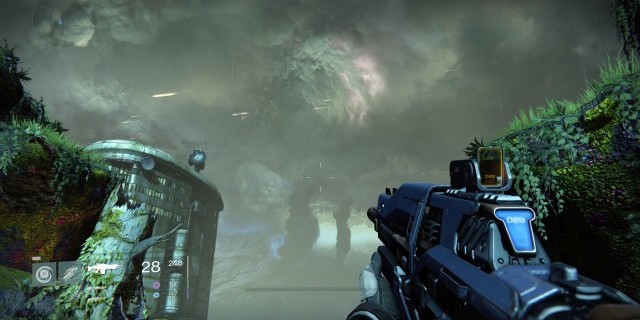
Beyond the Strike missions, there are two things that help set Destiny apart: the loot and the level progression. Unlike titles such as Borderlands and Diablo, Destiny doesn’t throw new loot in your face at every opportunity. Some will consider this a negative, but I found it refreshing. Every loot drop and crate you find feels special, even if what you earn isn’t particularly amazing. This turned the chore of spending a ton of time in your inventory digging through loot into a less compulsive thing, allowing you to focus on the mission at hand.
As for the level progression, it’s nothing terribly different from the norm in general, but the ability to carry over your character from the main game into the competitive multiplayer, known as the Crucible, is a fantastic way to alleviate the tedium of grinding. When I ran into a Strike mission that seemed a little too tough for my current character, I found myself jumping right into the competitive modes to gain experience. This was preferable to grinding it out in the patrol missions, which simply offer you a chance to pick up mindless side quests on the different planets for extra experience, and it allowed me to take my character and equipment into battle with real people.
This isn’t to say the Crucible modes are particularly exciting on their own, though. Destiny’s competitive multiplayer is fairly barebones, providing nothing different from most shooters on the market. With more compelling competitive games like Titanfall available, it’s hard to imagine sticking with the Crucible here for an extended period of time.
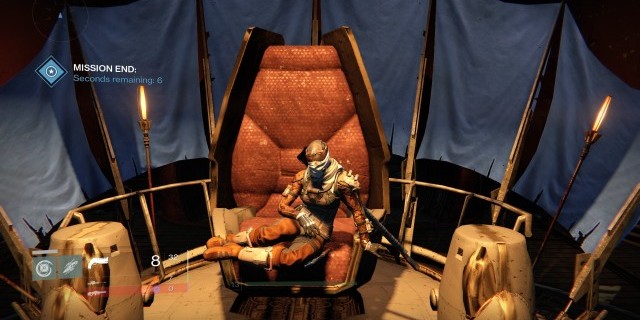
Destiny is a bunch of brilliant ideas cobbled together to make for an uneven, forgettable experience. There really much here that hasn’t been done before, and better, by countless other games, including Bungie’s own Halo titles. The elements that should help Destiny stand out in an otherwise crowded market? The lore, the seamless multiplayer, the large worlds? They’re barely executed on. It lays some exciting groundwork for a potentially amazing game, I just wish I could play that game now rather than slog through a half-baked attempt.
Pros: Gorgeous environments, fantastic gunplay, excellent loot and level progression
Cons: Weak story, dull mission design, lifeless worlds, huge lack of variety



















